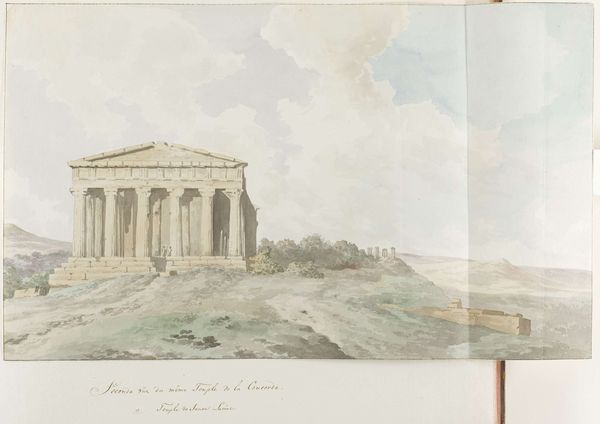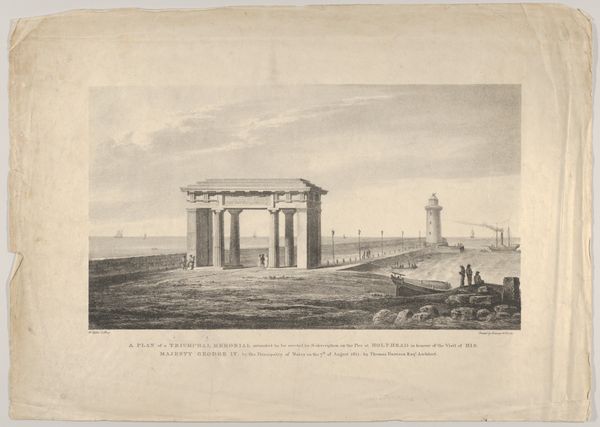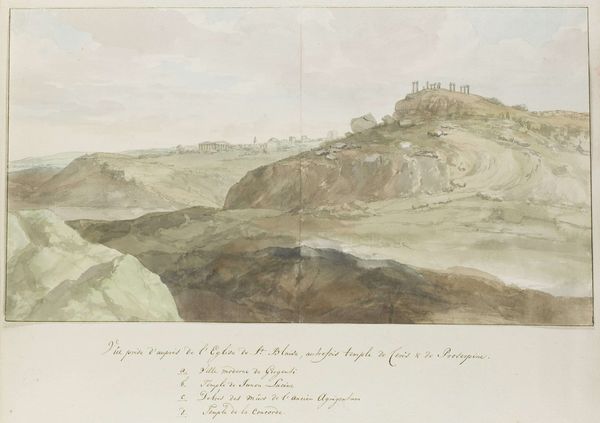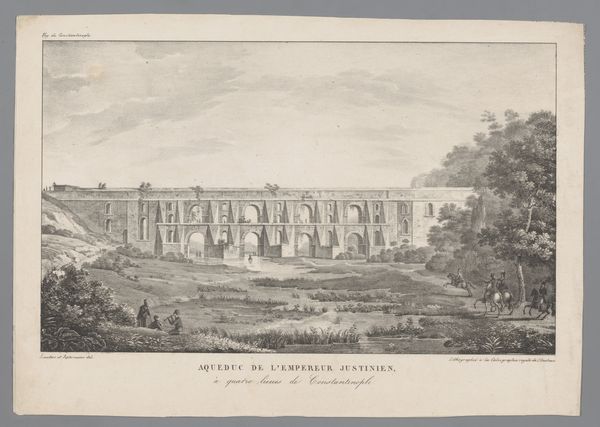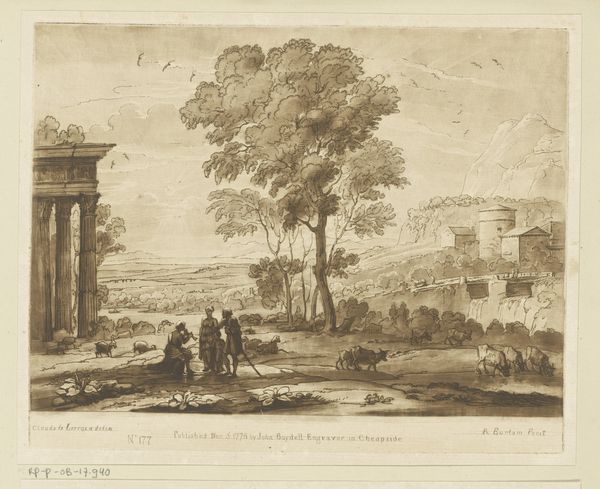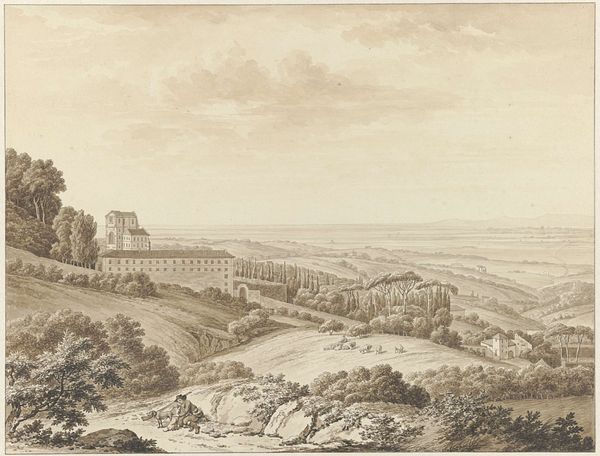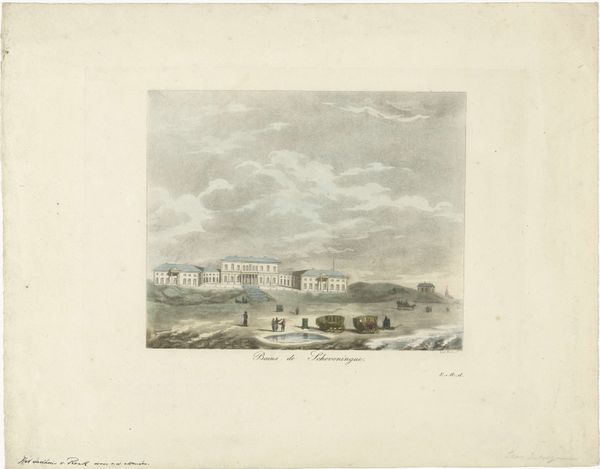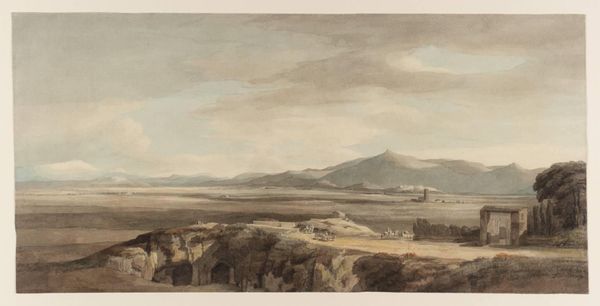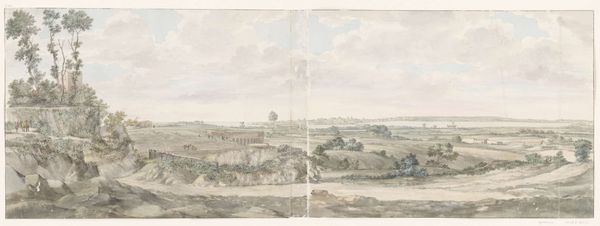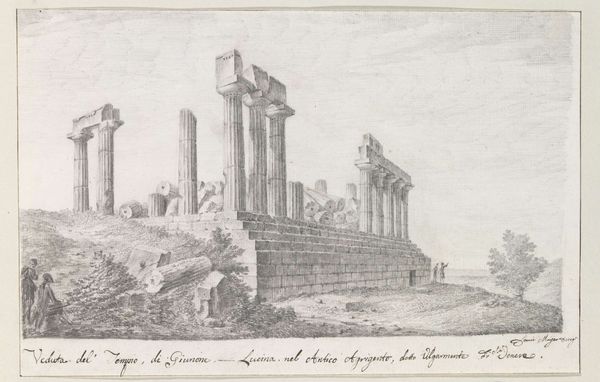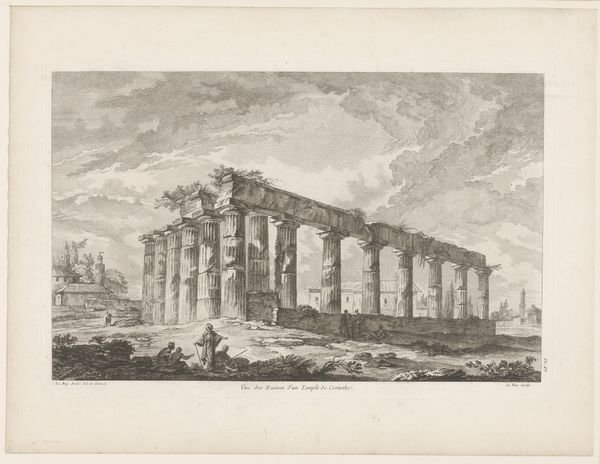
drawing, watercolor, architecture
#
drawing
#
neoclacissism
#
aged paper
#
toned paper
#
light pencil work
#
pencil sketch
#
landscape
#
etching
#
watercolor
#
botanical drawing
#
watercolour illustration
#
botanical art
#
watercolor
#
architecture
#
warm toned green
Dimensions: height 204 mm, width 304 mm
Copyright: Rijks Museum: Open Domain
Curator: This delicate rendering captures the Temple of Concordia in Agrigento. Created by Louis Ducros in 1778, the work combines watercolor and pencil. It's quite typical of Neoclassical interests at the time. Editor: The aged paper lends a dreamlike quality. I immediately notice how the muted, almost washed-out colors create a sense of faded grandeur. The temple, though still standing, appears as a ghostly echo of its former self. Curator: Indeed. The Neoclassical movement was fueled by the rediscovery of classical antiquity. Depictions such as these—idealized yet informative—contributed to the burgeoning interest in archaeological sites and classical forms. We must consider the Grand Tour, and how wealthy Europeans would seek out this aesthetic education for themselves. Editor: Looking at those seemingly endless columns, marching across the hilltop, the artist seems fascinated by harmony, the repeating forms signifying reason and order. I'm also curious about the location: notice how Ducros has subtly placed this magnificent human creation *within* nature, suggesting our connection to a powerful natural world. What symbols were present originally and why were they removed, altered or ignored? Curator: A worthwhile point. Although, I think Ducros emphasizes a particular kind of order. Consider the emerging nationalistic projects across Europe: depicting a distant temple provides visual reinforcement of concepts of authority, drawing parallels to the empires they hoped to build or restore. The temple is an almost pristine edifice in the process of nature re-claiming. Editor: It is difficult to overlook that even in near-ruin, it speaks volumes of our impulse to monumentalize important beliefs. While these architectural images were very popular with travellers to southern Europe during the later 1700s and into the 1800s. It carries significance not only for its architectural purity, but its ability to evoke a shared cultural memory. Curator: I agree; this piece beautifully showcases how archaeological fascination served broader political and cultural agendas during the Neoclassical period. Editor: And it's still speaking to us now, over two centuries later. What a remarkable convergence of form and feeling across time.
Comments
No comments
Be the first to comment and join the conversation on the ultimate creative platform.
